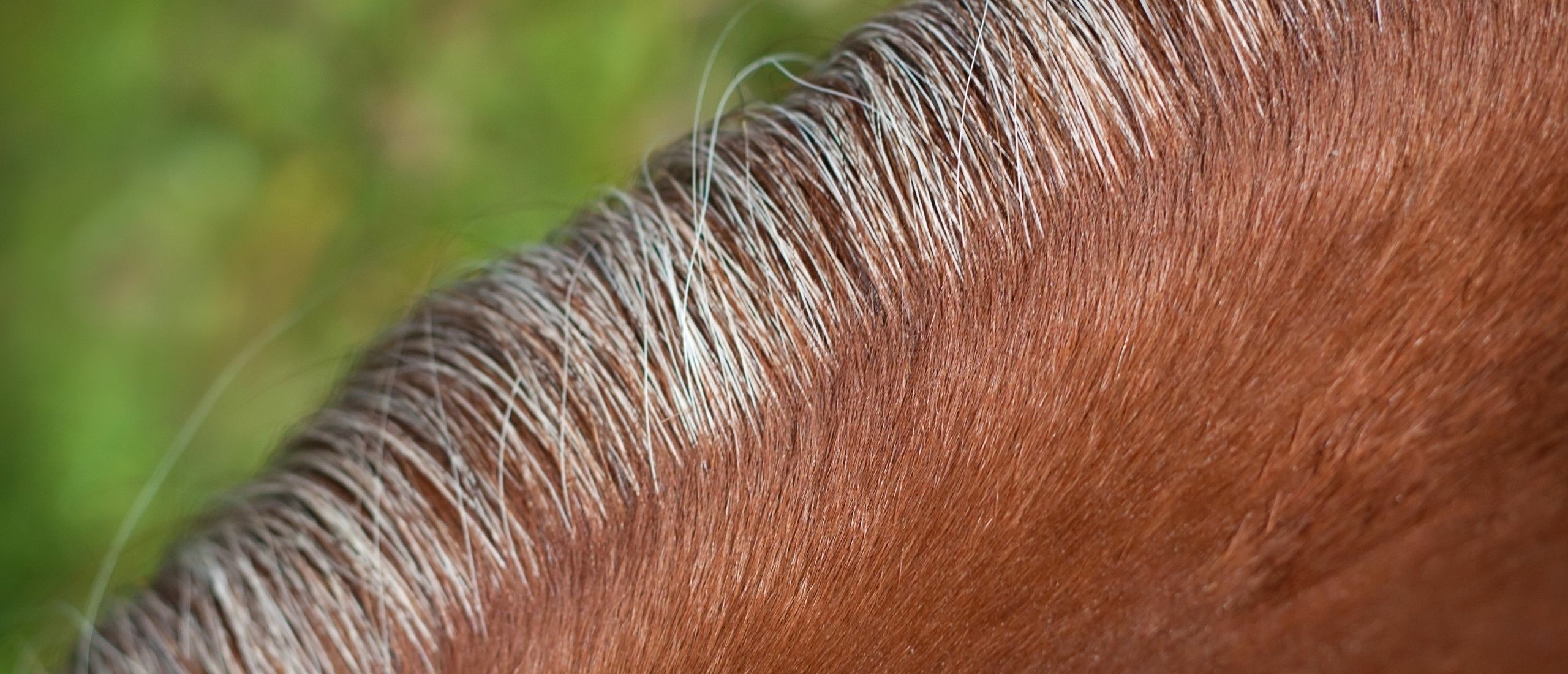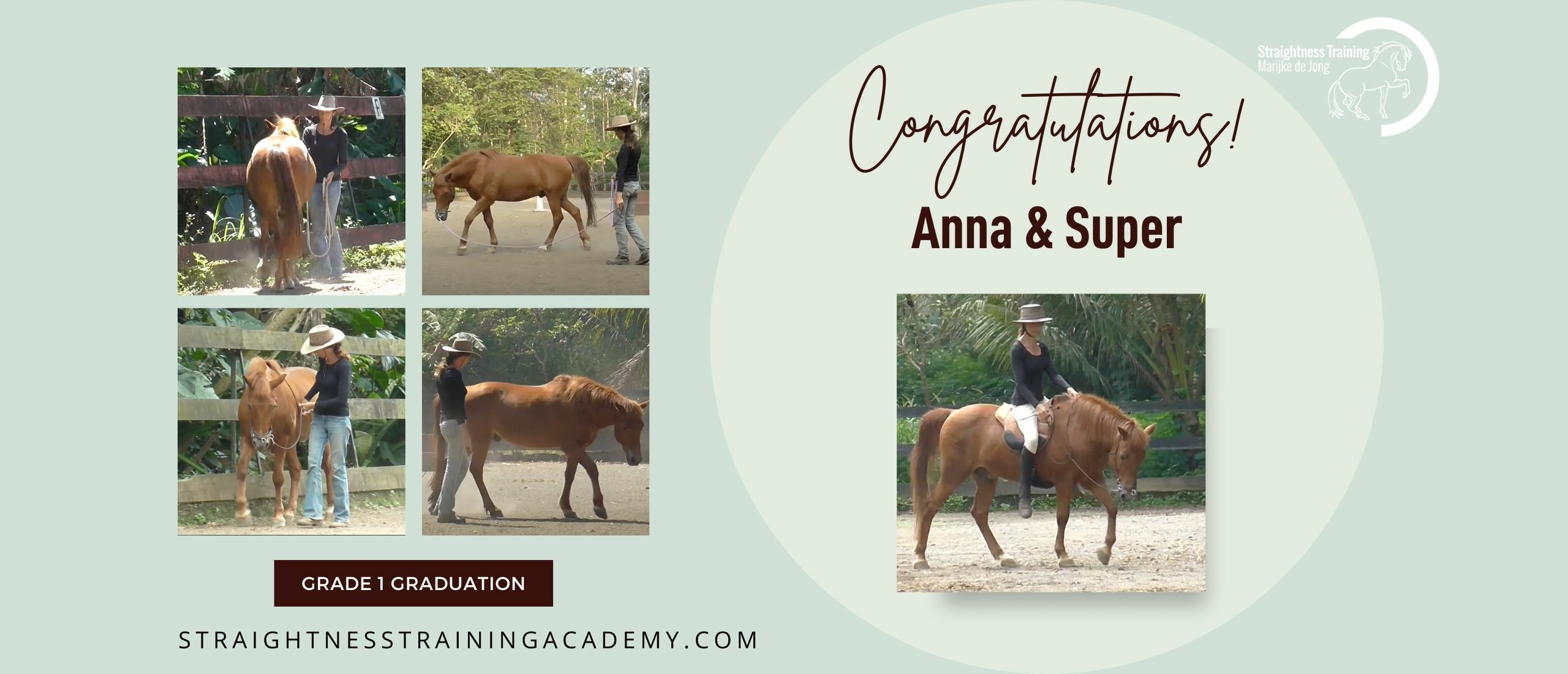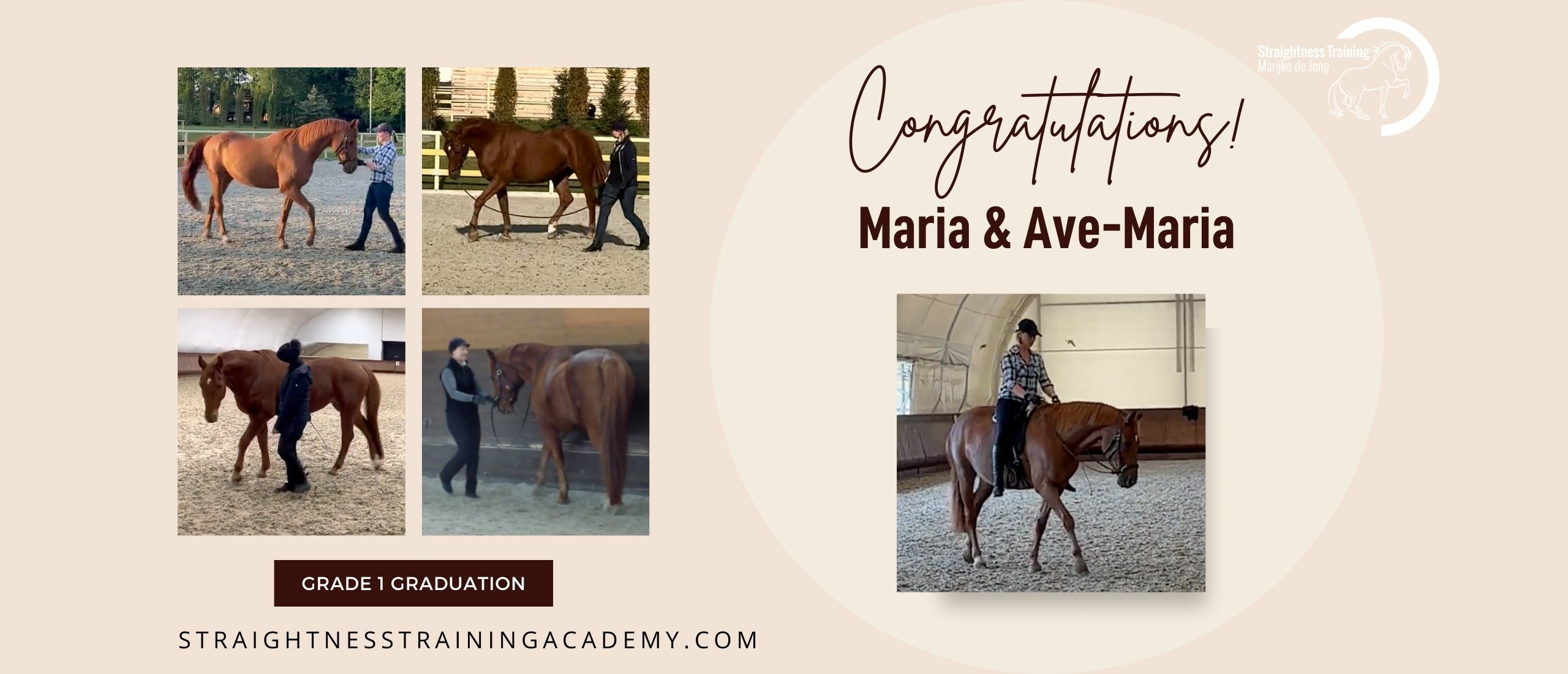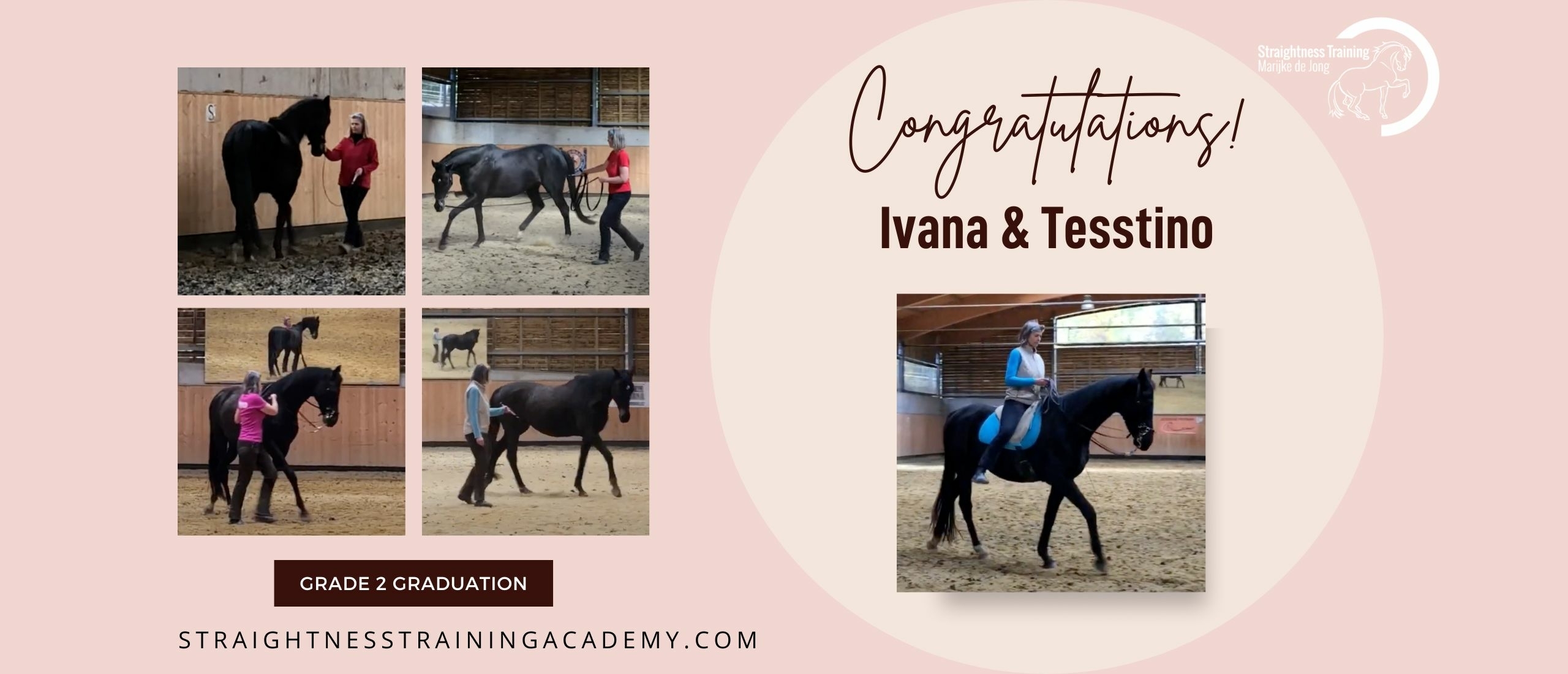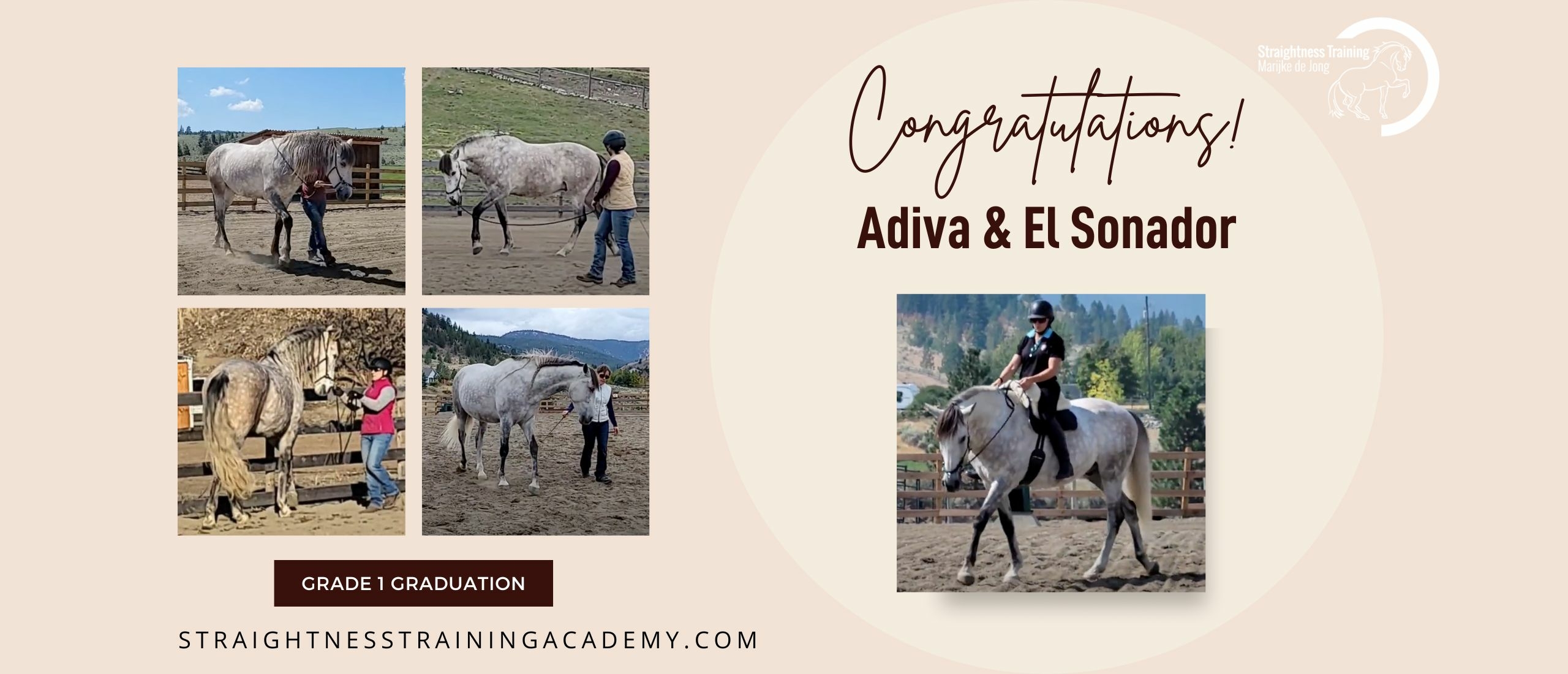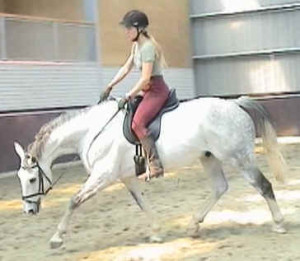 The forward-down tendency and lowering the horses neck is an important part of riding horses, and it's the second key of Straightness Training, but it is not the only part! When a rider rides a horse only in forward-down – without engaging the hind legs in a proper way – the following symptoms might arise:
The forward-down tendency and lowering the horses neck is an important part of riding horses, and it's the second key of Straightness Training, but it is not the only part! When a rider rides a horse only in forward-down – without engaging the hind legs in a proper way – the following symptoms might arise:- The horse leans on the rein and uses the hand of the rider for support, like a fifth leg.
- The horsae might stumble and overreach because the front legs are too slow leaving the ground.
- The horse will develop only pushing ability and not any carrying ability , so he will never learn to carry the rider in balance.
- Due to the weight of the rider that is added to the front legs, strain injuries can occur.
- The horse moves "downhill”.
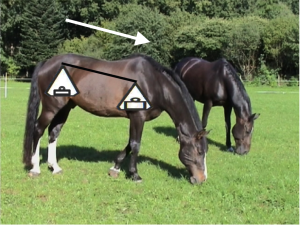 But also a grazing horse is lifting his back….. still carrying 3/5 of his weight on the front legs. Really developing the back of the horse doesn’t happen magically as simply a result of lowering the neck. We need more!
But also a grazing horse is lifting his back….. still carrying 3/5 of his weight on the front legs. Really developing the back of the horse doesn’t happen magically as simply a result of lowering the neck. We need more!More paramaters are needed
Of course the horse must lower his neck and ‘search’ forward down for the rider’s hand. But lowering the neck is not enough to prevent the horse from physical problems and to develop a proper topline. The horse must also step more under his center of mass (which is the third key of Straightness Training) and into the light contact, thereby creating a connection over the top line, encouraging and allowing the horse’s back to come up to allow the smooth flow of energy through the horse. To get a hind leg to step under, we need correct lateral bending of the horse (which is the first key of Straightness Training). This brings the inside hip forward, making the hind leg step exactly under the center of balance.
The horse must also step more under his center of mass (which is the third key of Straightness Training) and into the light contact, thereby creating a connection over the top line, encouraging and allowing the horse’s back to come up to allow the smooth flow of energy through the horse. To get a hind leg to step under, we need correct lateral bending of the horse (which is the first key of Straightness Training). This brings the inside hip forward, making the hind leg step exactly under the center of balance.  So three important parameters or 'keys' are:
So three important parameters or 'keys' are:- Lateral bending
- Forward-down tendency
- Stepping under
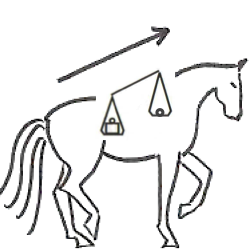 This goal can be reached by the following three keys of straightness training: 4. Bending the inside hind leg using the exercise shoulder-in 5. Bending the outside hind leg using exercises like hauches-in/renvers 6. Bending both hind legs using using exercises like piaffe/pirouette All keys of Straightness Training are necessary to develop a proper top line and carrying hind legs.
This goal can be reached by the following three keys of straightness training: 4. Bending the inside hind leg using the exercise shoulder-in 5. Bending the outside hind leg using exercises like hauches-in/renvers 6. Bending both hind legs using using exercises like piaffe/pirouette All keys of Straightness Training are necessary to develop a proper top line and carrying hind legs.Necessary 'evil'
The second key, the 'forward down' is a 'necessary evil' so to speak, because:
- It's necessary to lengthen and to relax the back muscles and the lengthening of the neck also engages the hind legs to swing more forward
- But the weight of the head and neck will bring the weight more towards the front legs.
Lowering the horse’s neck is not enough
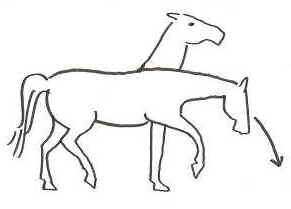 The keys of Straightness Training are necessary to protect the horse against major physcial problems such as back problems or strain injuries in the front legs. In the beginning of the education of the horse the first three keys are most important:
The keys of Straightness Training are necessary to protect the horse against major physcial problems such as back problems or strain injuries in the front legs. In the beginning of the education of the horse the first three keys are most important:- Lateral bending
- Forward-down tendency
- Stepping under
- must be trained in harmony and will lay the solid foundation.
- form the central theme during the entire education of the horse, from circle to pirouette.
- form the proper basics to fall back on when encounter problems. Riders can work from these basics to fix whatever problems they encounter.
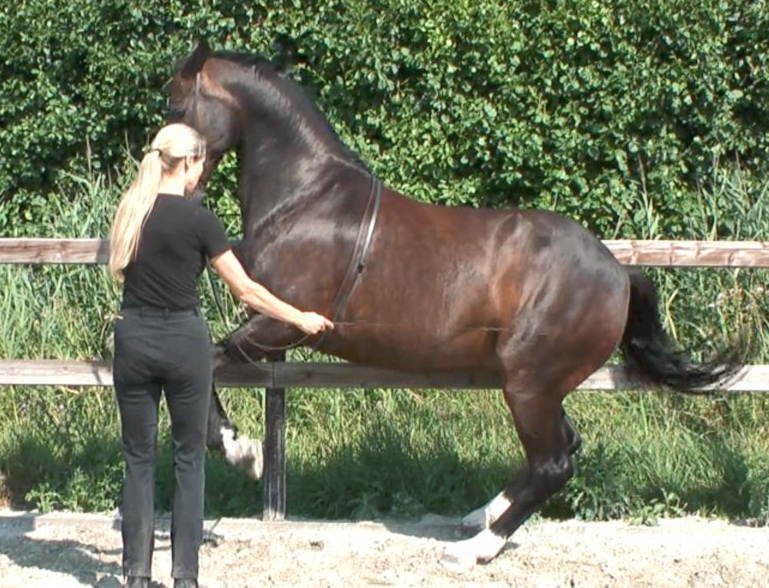
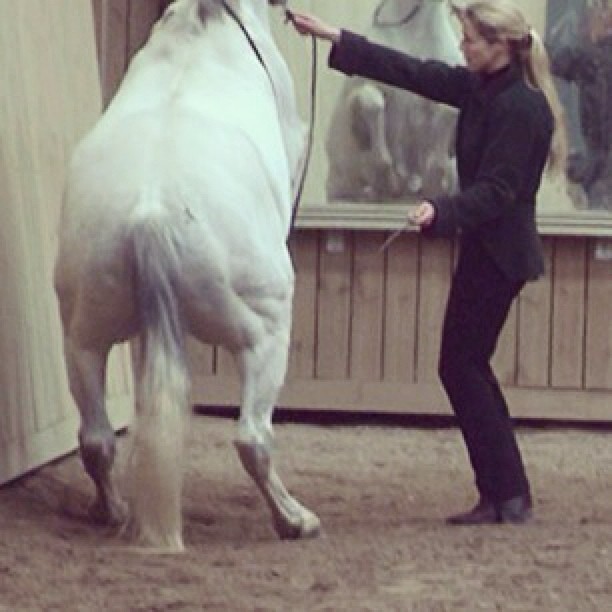
Join My Free Training
Jump on over to my free training were you get a three-step process for implementing Straightness Training in your training sessions right now. Watch two videos and download your free eBook about the ST Exercises which will help you put the information into action right away:


